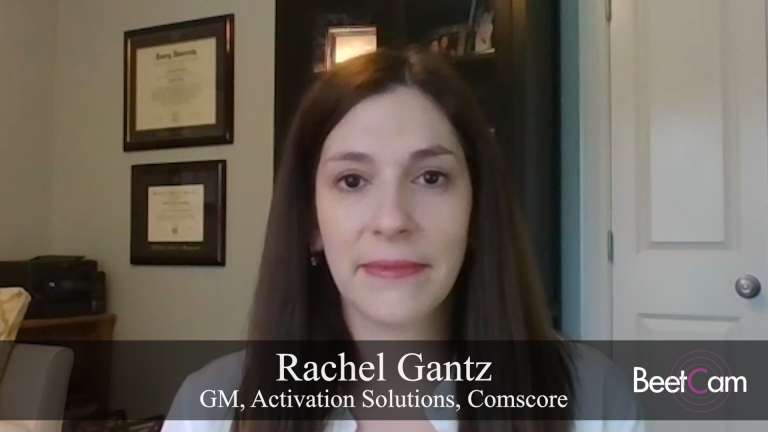
As privacy regulation has dampened some aspects of advanced user targeting and as the deprecation of cookies looms near, marketers are seeking an alternative way to get the best fit.
One of the leading contenders – contextual targeting, the practice of seeking out ad inventory adjacent to particular kinds of content, rather than targeting individual users, no matter what content they are consuming.
But, whilst the emergence of contextual targeting is being framed as the flip-side of audience targeting, Rachel Gantz says there is no dichotomy.
“I think it’s the wrong question,” says Comscore’s general manager for activation, in this video interview with Beet.TV. “It’s not ‘either-or?’. It’s not ‘audience or contextual?’. The question should be ‘how do I get the best out of both?’
Context for COVID-19
Gantz has a prescient example. She says many advertisers that had allocated budget to sporting events now cancelled by the global COVID-19 pandemic are seeking an alternative way to reach the same kind of audience.
“So we’re seeing a huge surge in demand for some of our sports fan audiences… viewers of sporting events from past seasons … for things like golf and baseball,” Gantz says.
“But then you layer on that contextually relevant piece. One example was … a CPG company who had tagged a lot of money for part of their media plan for sporting events.
“(They) still wanted to reach those audiences, but they wanted to do so in food- and recipe-oriented content. That’s that contextual layer that you can put on top of that.”
As COVID-19 continues to spread, local television viewing habits are shifting. Join us on April 14 as we talk about the impact on local markets and share insights on what trends are emerging across the U.S. https://t.co/Er3dVXWaWo #coffeewithcomscore #TV #coronavirus
— Comscore (@Comscore) April 8, 2020
Beyond cookies
Gantz says Comscore is partnering with ad platforms like Xandr to bring cookie-free, contextually-based demographics to market.
“For example, in Europe where GDPR impacted countries, (we can) take some of those tenets of age and gender targeting and make that available in a contextual standpoint,” she adds.
“Where the industry is going is to expand that to behavioural audiences, and really merge those two.”
This video is part of a Beet.TV series titled “Audience, in Context,” presented by Xandr. For more videos please visit this page.